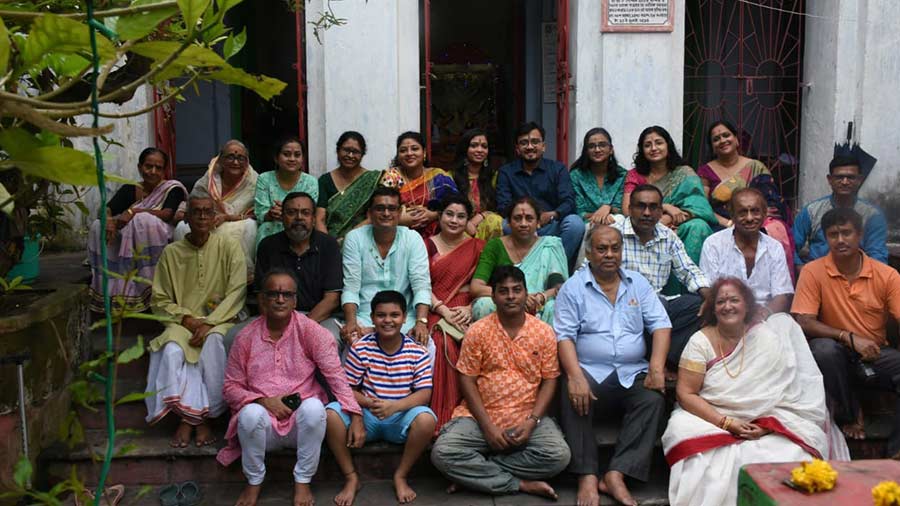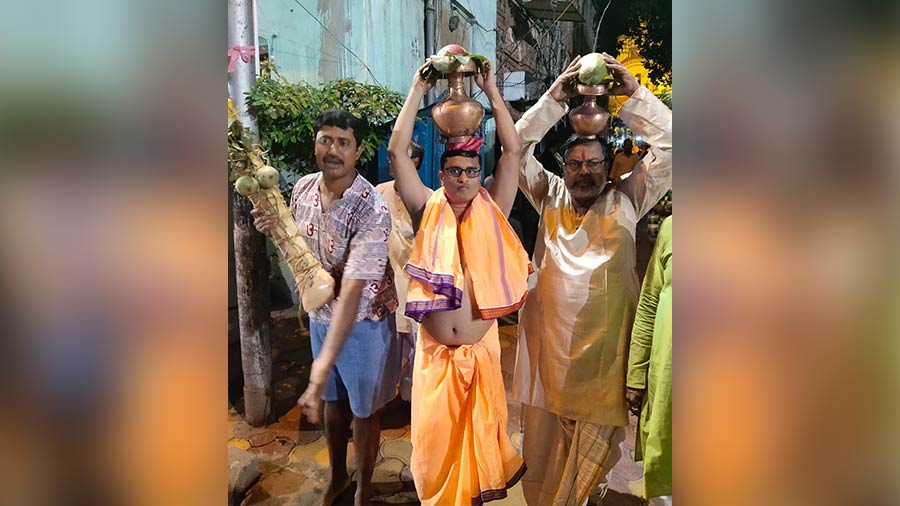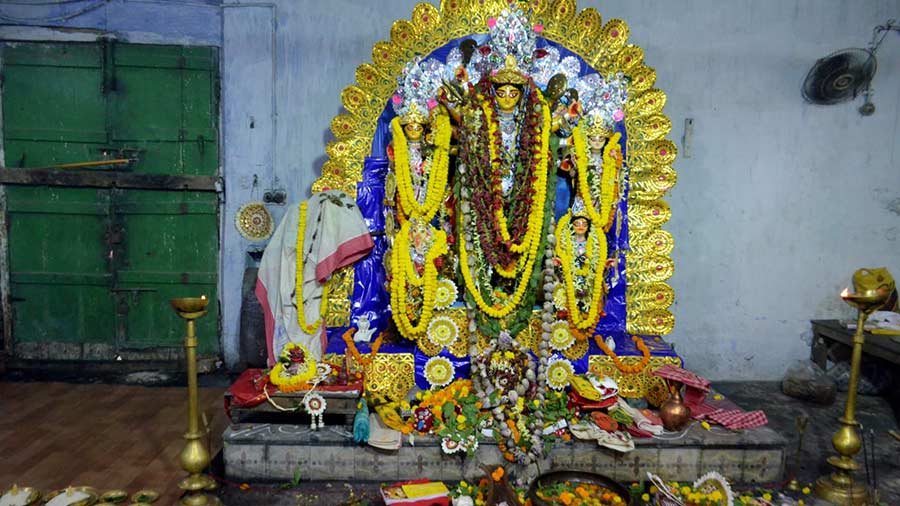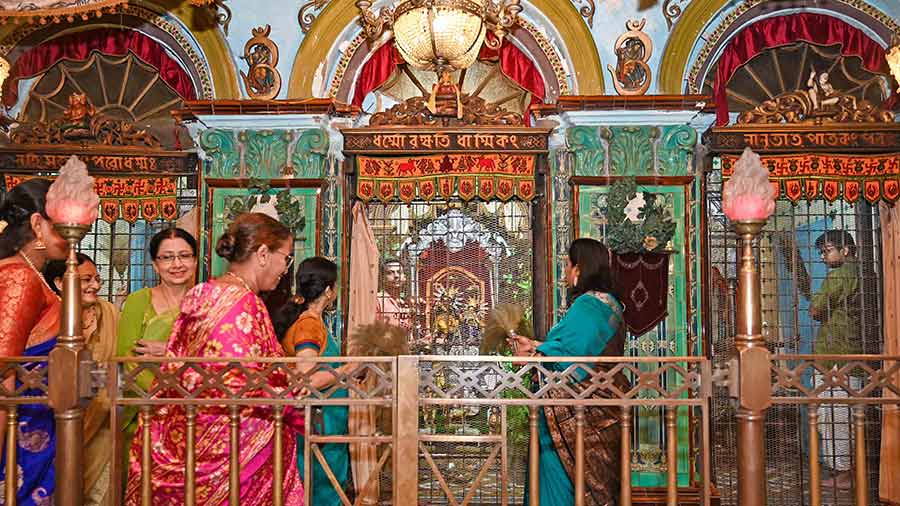In an old and congested neighbourhood of Sovabazar’s Haatkhola, the sixth generation of a family is carrying on the traditions of a 200-year-old Durga Puja. Welcome to the family puja of the Surs, where simplicity and cordiality wins over pomp.
Originally from Taragun village of Mogra in Hooghly district, the family came to Calcutta to trade in the jute business immediately after the Battle of Plassey in 1757. Once business settled and the family’s wealth grew, like many other Hindu landlords and businessmen, the Sur family started celebrating Durga Puja to raise their social standing.
A family story
The family’s present abode has an ancient temple that extends to a Durga dalan, which is decked up like a bride for five days every autumn.
Pradip Sur, now in his 70s, remains an active member of the festivities and of the family. He admits that there is hardly any documented history of his family, but reckons that the nine-pinnacled Sur family temple is a Nabaratna temple designed in the Bengal school of architecture. The temple enshrines their family deity Gopal Jiu, and is worshipped daily following Vaishnav rituals. Festivals like Ras Utsav and Dol Yatra are also celebrated in the temple by the family. It is believed that the temple is 360-years old. The family holds a place of respect in the local community as the ones who own the temple.

Generations of the Sur family in front of the Durga ‘dalan’
As per surviving documentation, the first patriarch was Nayan Chandra Sur, who has a small lane in north Kolkata named after him. It is assumed that he started the Durgotsav and it has continued since.
The family is now divided into some eight branches, living in different cities. Yet, they come together to celebrate their annual family festival every year, sharing responsibilities and expenditures. Most of the married daughters also return home during this time.
‘Bari’r pujo’

The ritual of ‘Devi baran’ being performed by the women of the family
There is no glitz in any of the ceremonies of this bari’r pujo, but it paints a beautiful picture of family bonding.
The idol is made in an ekchala style, with the traditional design of many old pujas, where the lion has an almost horse-shaped face.
Keeping up with times
The puja rituals begin with an arpan-nama, through which the event is dedicated to the family. Over the years, the norms and rituals of the puja have seen modifications to keep up with changing times, and the family members have welcomed it.
“We had a tradition of animal sacrifice in this puja till 1964. But there was a demand by the younger members of the family to end it. And it was indeed stopped after the mutual consent of the elders of the family,” says Pradip Sur.
Though the animal sacrifice has ceased for decades, the weapons that were once used to kill the sacrificial animal are still worshipped during Durga Puja with a unique ritual. When these arms are taken to Devi Durga, the family deity Gopal Jiu is put to sleep, so that the gory rituals are not performed before him. Family member and veteran journalist Snehasish Sur, points out that this is one of the things that indicates the deep-rooted Vaishnava beliefs of the family.

A Durga Puja family ritual
Another past family ritual was a Chandipath that began 15 days before Ashtami. However, this is no longer conducted due to a lack of participation and cost.
Earlier, on Dashami, porters would carry the idol on their shoulders to the Ganga, but the pandemic put a stop to this tradition. For the last two years, motor vehicles have been used to carry the idol on the day of immersion.
Immediately after the immersion, the bamboo structure is salvaged from the water and the same is reused over the years, a ritual that is considered auspicious. The story goes that one time a family member tried to build up a new structure, and that brought bad tidings for the family. The sindur khela on Dashami is also celebrated with minimal fanfare in the Sur house.
Among the major attractions every year is the feast that is sponsored by a member of the family every year and everyone gets together with close friends and neighbours.
Pradip Sur, even in his ripe age, is just as energetic about organising this puja on behalf of his family and is proud of it too. With a flash of joy, he prides on the fact that his two-century-old family puja continues with enthusiasm, even as many such pujas in north Kolkata die out over family disputes.


